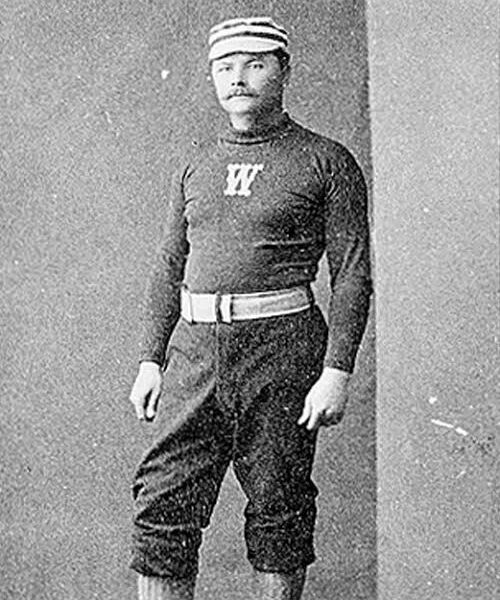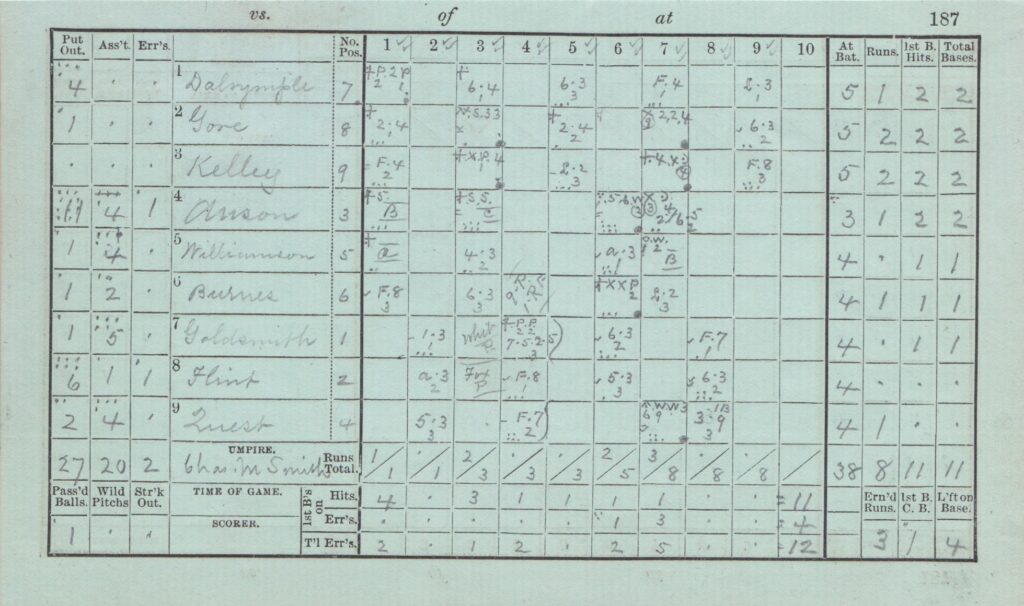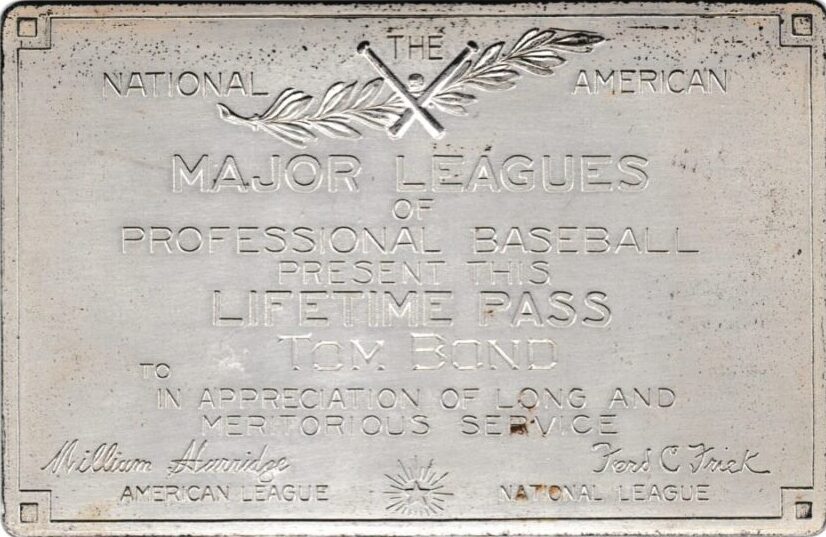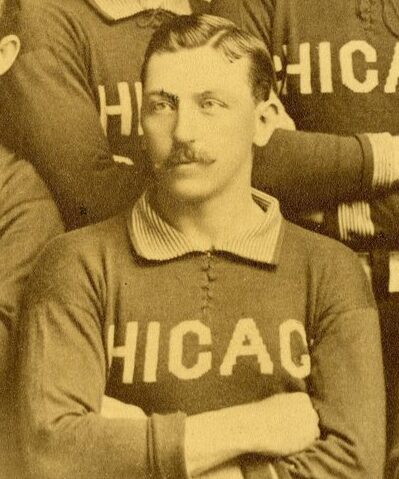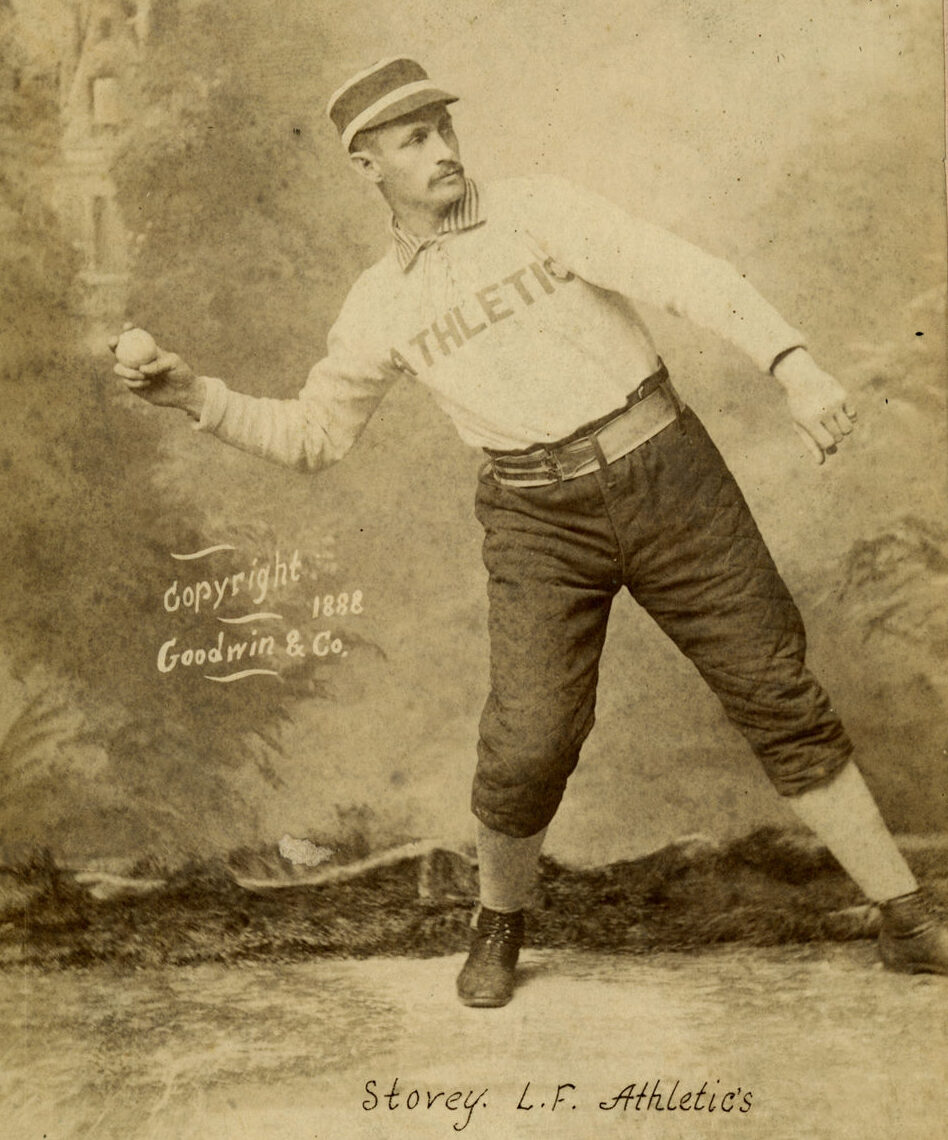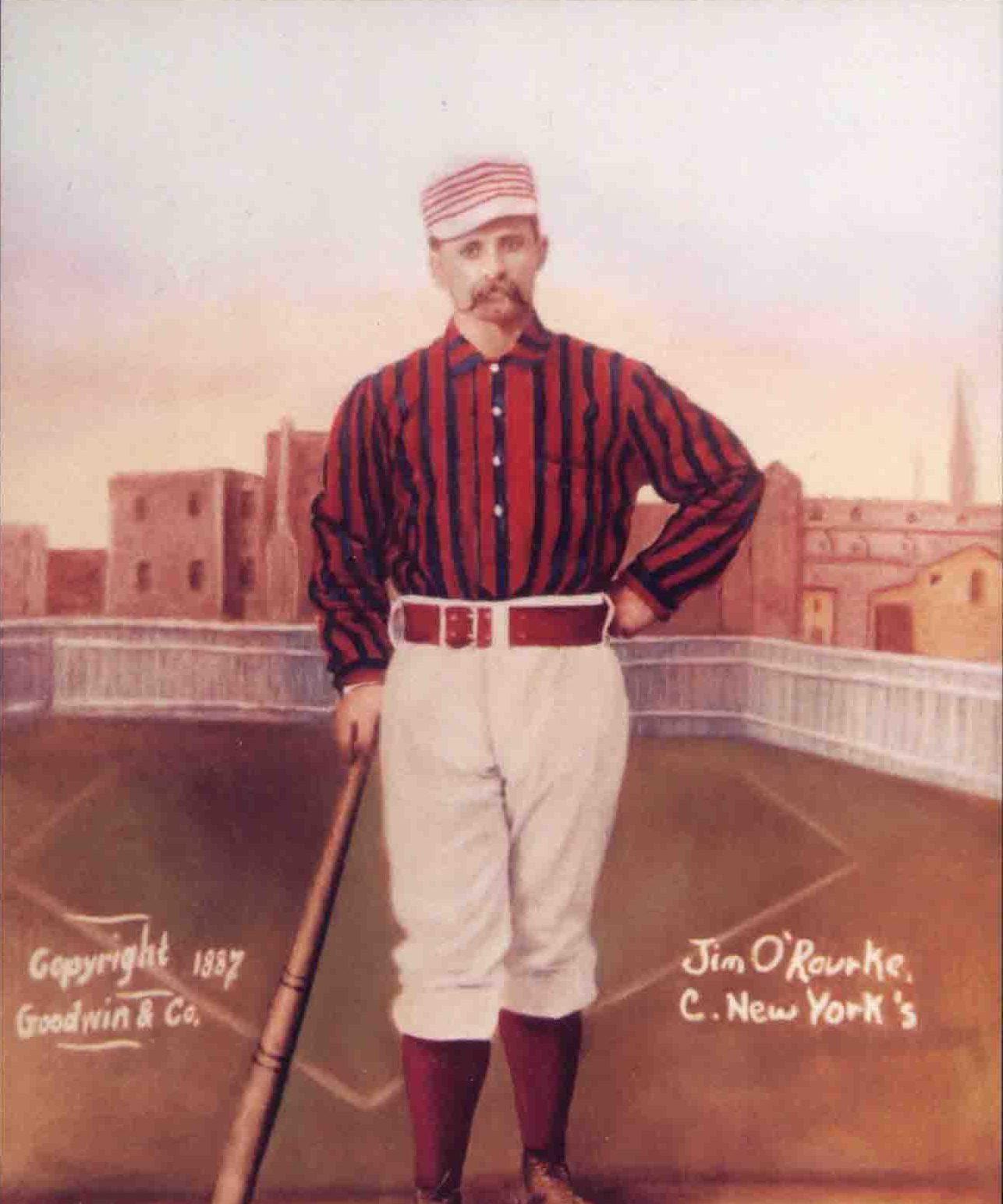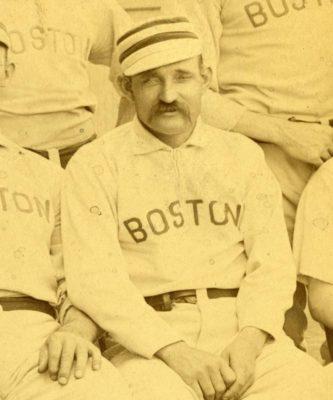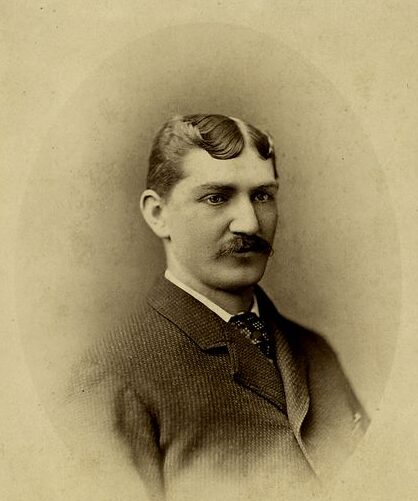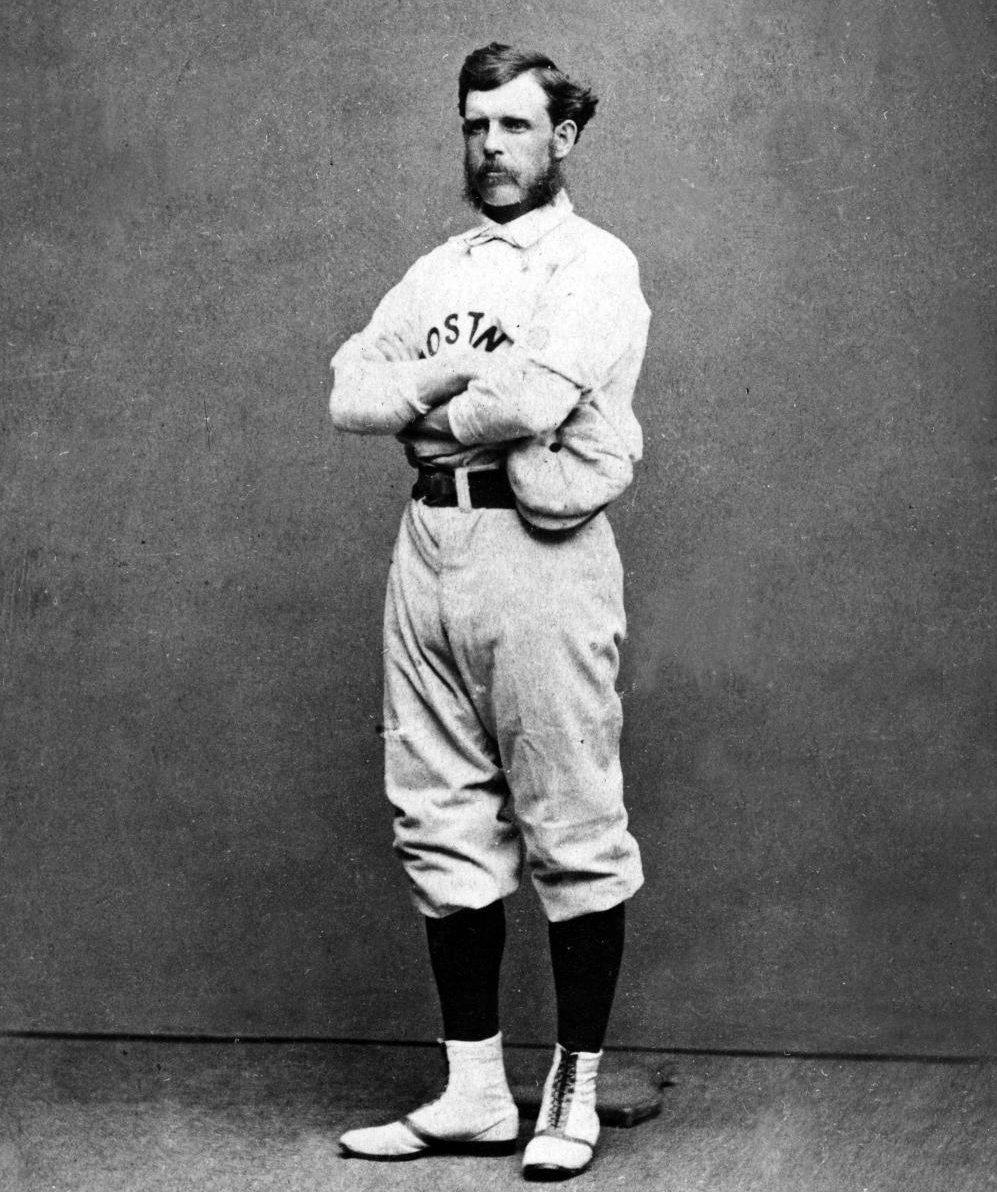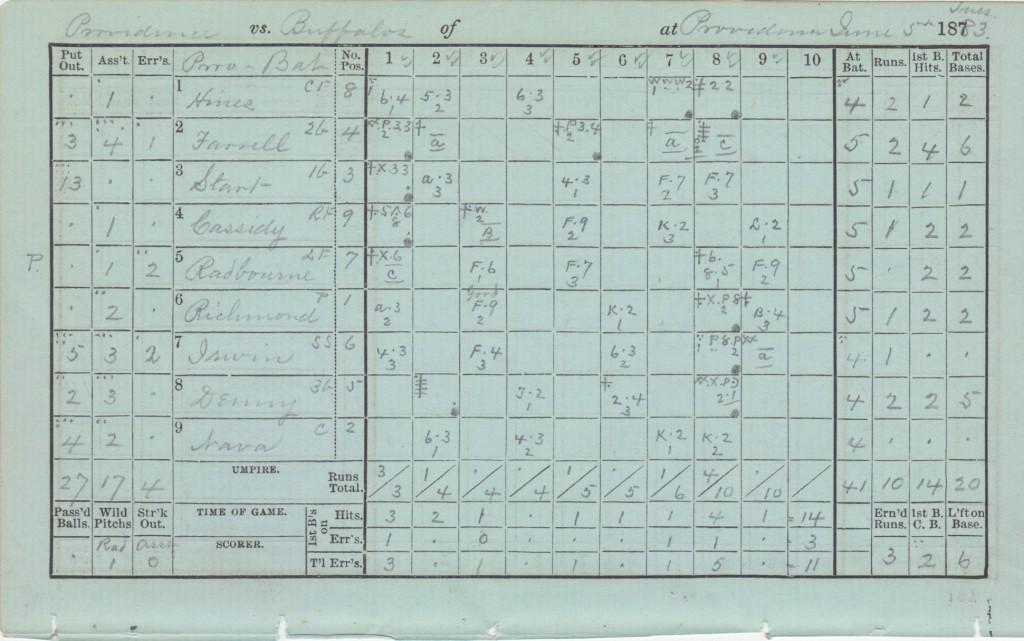
A forgotten star of the 19th-century, Paul Hines has both the statistics and narrative for Cooperstown.
On BaseballReference.com, league-leading numbers are shown on a player’s statistical page with bold blank ink. According to the site, “the Black Ink Test is a measure of how often a player has led the league in ‘important’ statistical categories… It may serve as a tool to evaluate how a player compares to Hall of Famers, as the average batting score [for Cooperstown men] is around 27…”
Hines scores 30 on the Black Ink Test, three points higher than the average inductee. He led his league in hits, homers, and RBI once each, batting average and total bases twice each, and doubles three times.
The Gray Ink Test also helps identify Cooperstown-worthy players. Baseball Reference says, “…the Gray Ink Test is a measure of how often a player been among the top ten league leaders in ‘important’ statistical categories…the average batting score of Hall-inducted players is around 144…”
Hines’ score of 186 is considerably above the score of the average Cooperstown man.
For the first five years of the National League’s existence, Hines was among its brightest stars. From 1876-1880 he had the most hits and doubles in baseball. Only Hall of Famer Jim O’Rourke scored more runs. During the half-decade of dominance, Hines tallied more RBI than everyone but Cap Anson. Paul Hines was that good.
Because of the abbreviated schedule of his day, Hines did not play in as many games as one would expect for a 20-year veteran. During his two decades in the big leagues he appeared in an average of 82.9 contests per season. That’s a just touch more than half of today’s 162-game schedule.
Despite this, he still finished with 2,133 lifetime hits and 1,217 runs scored. When his career hit total is neutralized and converted to 162-game seasons, it extrapolates to 3,300 career hits.
As for his narrative, Hines was the majors’ first Triple Crown winner in 1878. In addition to league-leading numbers in batting average, homers, and RBI, Hines topped the Senior Circuit slugging percentage, OPS, and total bases. That season he played in all 62 of his team’s contests.
The following year Hines repeated as batting champion, becoming the first to wear the crown in consecutive seasons. The centerfielder was also credited with big league baseball’s first unassisted triple play.
When Hines retired, only O’Rourke and Anson had more hits. Hines’ 16 years in center field remained the gold standard until 34 years after his retirement when Tris Speaker and Ty Cobb began their 17th campaign in center.
A .302 career hitter, Hines finished with 1,217 runs and 399 doubles. The fact is Paul Hines was a star. Many feel the Veterans Committee owes him another look.
Shown here is a scorecard filled out by Hines’ manager Harry Wright. The contest took place on June 5, 1883. Hall of Famer Wright penciled Hines in at the leadoff spot. Playing in center that day, Hines went 1-for-4 with a double and two runs scored.
Hitting in the fifth spot in the lineup is Old Hoss Radbourn who played left field. The future Hall of Fame pitcher tallied two hits of his own.
